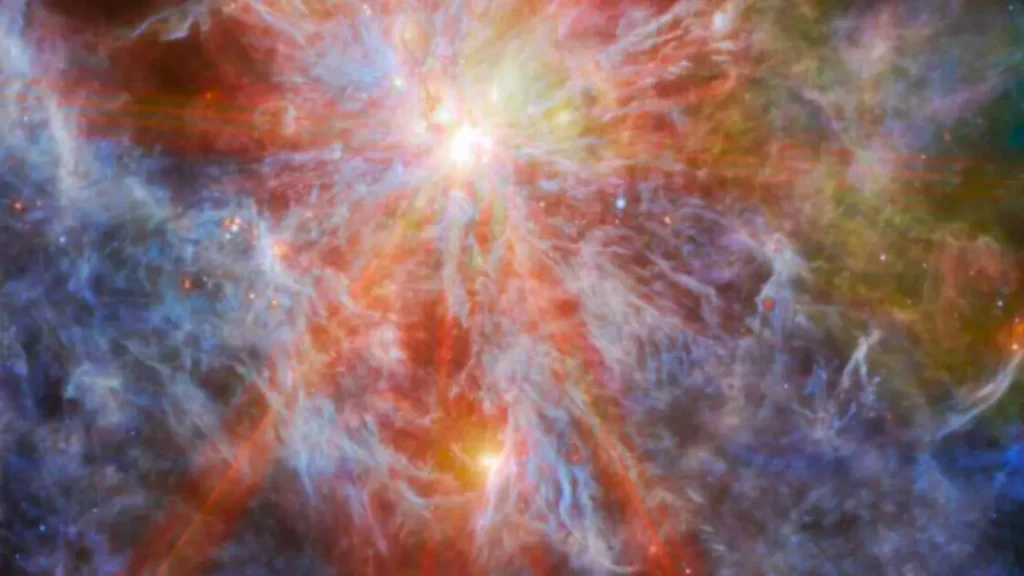
The James Webb Space Telescope, a collaboration between NASA, ESA, and CSA, has captured a striking image of an H II region in the Large Magellanic Cloud (LMC), a satellite galaxy of the Milky Way. This particular nebula, identified as N79, represents an expanse of interstellar atomic hydrogen undergoing ionization, as depicted by the Webb’s Mid-InfraRed Instrument (MIRI).
N79 stands out as a vast star-forming complex covering approximately 1,630 light-years within the relatively unexplored southwest region of the LMC. Often considered a younger counterpart to 30 Doradus (the Tarantula Nebula), which was also recently observed by the Webb, research indicates that N79 has exhibited a star formation efficiency twice that of 30 Doradus over the past half-million years.
The focal point of the image is on one of the three giant molecular cloud complexes known as N79 South (S1). The conspicuous “starburst” pattern surrounding this luminous object is a result of diffraction spikes. Such patterns are common in telescopes employing mirrors to collect light, and in Webb’s case, the hexagonal symmetry of its 18 primary mirror segments produces six prominent starburst spikes. These patterns are discernible primarily around intensely bright, compact objects, unlike most galaxies, which appear more diffuse and do not exhibit this specific pattern.
The MIRI, capturing longer wavelengths of light, reveals the glowing gas and dust within N79. This capability is significant as mid-infrared light penetrates deeper into the clouds, showcasing details that shorter wavelengths would be absorbed or scattered by dust grains in the nebula. The image also captures some protostars still embedded in the field.
Astronomers find star-forming regions like N79 intriguing due to their chemical composition, reminiscent of gigantic star-forming regions observed in the early universe when star formation was at its peak. Unlike the Milky Way, where star formation is less prolific, N79 provides a unique opportunity for astronomers to compare and contrast observations of star formation. Webb’s deep observations of distant galaxies in the early universe further contribute to this comparative study.
The N79 observations form part of Webb’s broader program examining the evolution of circumstellar disks and envelopes around forming stars of varying masses and at different stages of development. Webb’s high sensitivity allows scientists to detect, for the first time, the planet-forming dust disks around stars similar in mass to our sun, even at the distance of the LMC.
The image, depicting 7.7-micron light in blue, 10 microns in cyan, 15 microns in yellow, and 21 microns in red, represents a valuable contribution to our understanding of star formation and cosmic evolution.